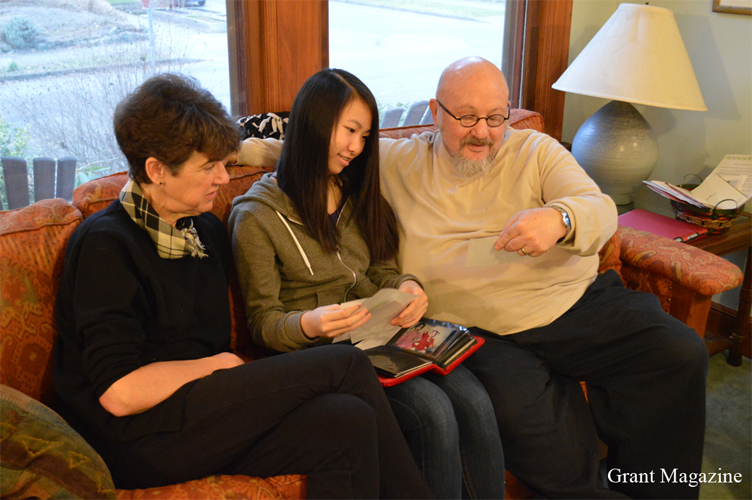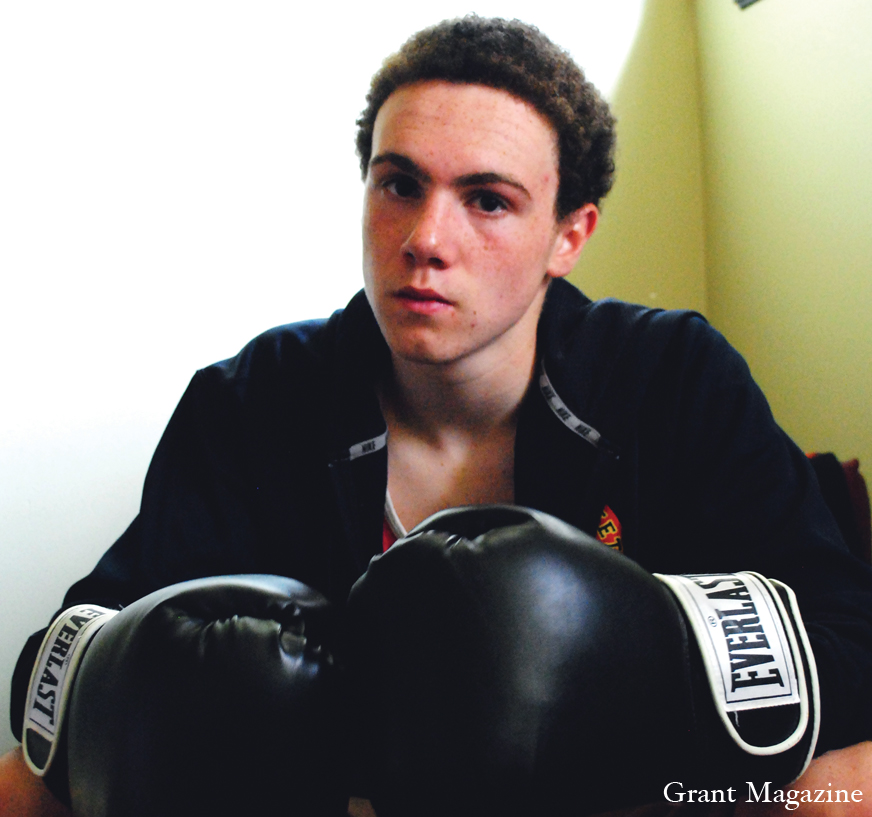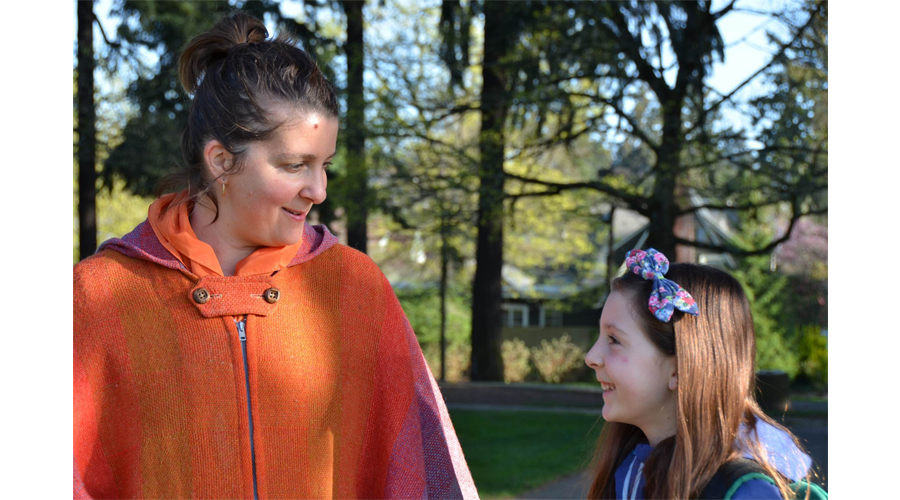When Grant sophomore Ann Curtis was about a month old, she was abandoned by her biological parents. She was left on the side of a road near a farm outside of Nanning, China, a city 100 miles northeast of the Vietnam border.
For 10 months, she stayed in a local orphanage before being moved into a foster home. “It was comfortable, but nothing fancy,” recalls Michael Curtis, her adoptive father. This was where she met her new family for the first time. She was 22 months old.
Curtis, 16, has always known she’s different. The hole in the roof of her mouth reminds her of it every day. She was born with a cleft palate, a condition where part of the bone above her lip did not develop correctly, creating a gap. Her family’s honesty and openness allow her to embrace her past and not let it define her.
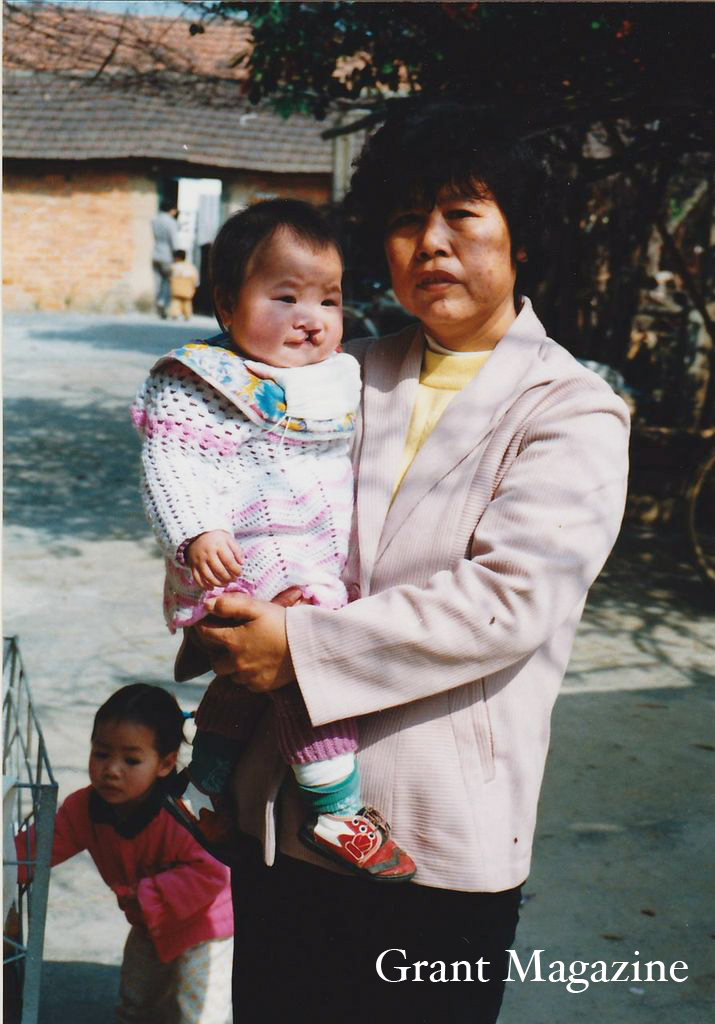
Because Curtis was abandoned, there are no records to identify who her birth parents are. “There’s definitely a void,” she says. “There’s always going to be something missing in my life. Having the knowledge of who I come from or where I come from. We have guesses or speculations, but we will never have the answers.”
While she’s come to terms with her past, she still uses it to fuel one of her passions: dance. “If they ask me to get emotional when I’m dancing, I’ll start thinking about it a little bit,” she says. “That’s the thing with dance. It just lets you be free and lets you feel what you want.”
Before Curtis was adopted, the only biological child of her parents, Josh, had begged his parents for a sibling for years. It wasn’t until he was 7 that the family adopted their first child, Jon. “The only reason why we were against it at first was because we were happy with one kid,” Michael Curtis recalls. “But we were happy to have a bigger family.”
“When we first saw Ann, we knew she was our child. There was no question about it.” -Michael Curtis
Several years later, Curtis and his wife, Linda Larkin, decided it was time to expand their family once again. “I remember one night, my wife said: ‘I always knew I wanted to have a daughter,’” Michael Curtis remembers. “And I was all for it.”
They contacted Holt International Children’s Services, the same adoption agency they used seven years earlier to adopt Jon. They saw pictures of Ann and a few medical records. “The first time you see the picture of a child you didn’t know five minutes before who is now your child is pretty amazing,” recalls Michael Curtis. “When we first saw Ann, we knew she was our child. There was no question about it.”
The Curtis family left for China in 2000. She had already had a surgery on her cleft palate and later had three more. One operation was a bone graft, where a chunk of bone was taken from her right hip and placed above her lip. “It’s hard for all of us,” says Larkin. “Any time someone has surgery, there’s a lot of concern.”
Because her cleft palate affected her speech, words with ‘P’, ‘S’ and ‘T’ were difficult to pronounce. So she attended speech therapy off and on from age four to 10. “It’s mostly had to do with my speech,” she says. “But nothing else really, if you notice a scar, that’s mostly it, but most people don’t.”
She dances at Hollywood Dance studio, where she first started. “I wanted to start dancing when I was little and I ended up walking out of my first class because I was super shy,” she recalls. But after attending her friend’s dance performance, she grew jealous and knew she had to start again. She now practices ballet, contemporary, hip-hop and jazz.
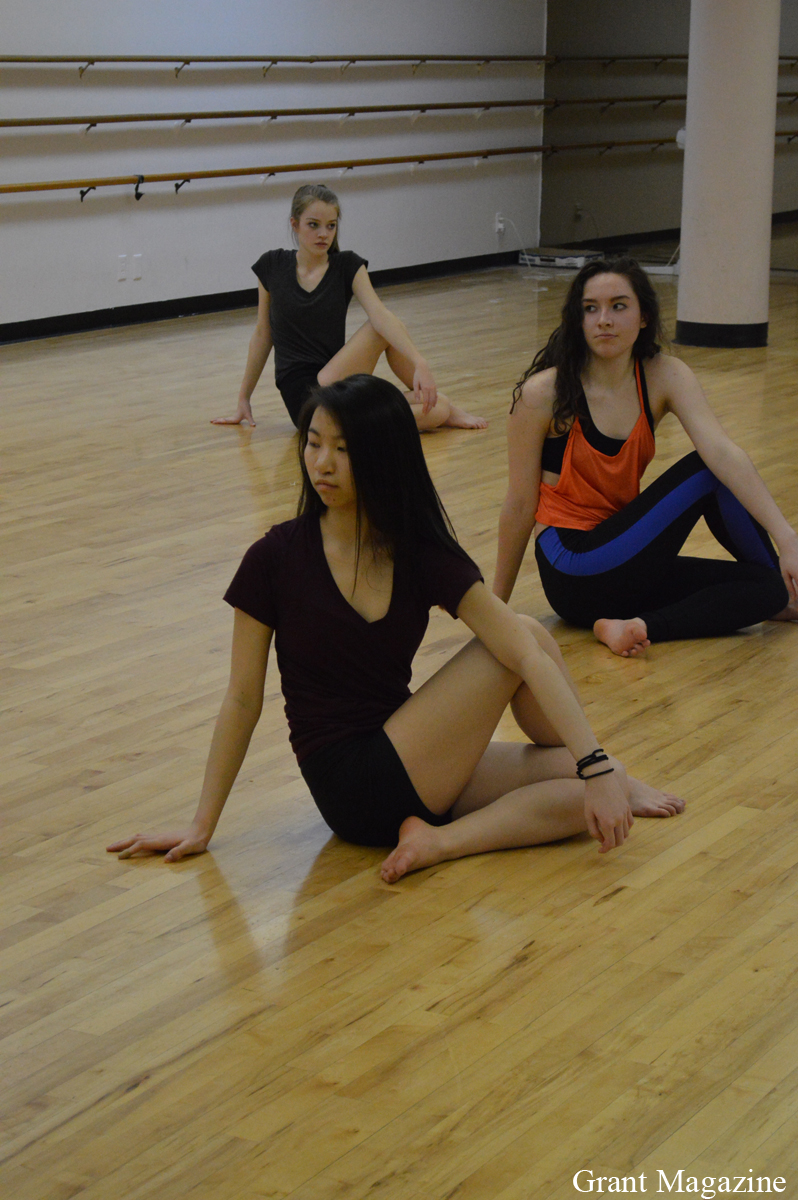
Audrey McBride, a Grant High School sophomore, first met Curtis when they took a ballet class together in kindergarten. “I can tell she really enjoys it and she works really hard. It’s something she’s passionate about and it makes her happy,” says McBride.
Curtis’ admiration for her former dance teacher, Krista Loveless, adds to her enjoyment in the sport. “She danced professionally and I really look up to her. You can really connect with her,” says Curtis.
Loveless helped Curtis overcome patella femoral syndrome, an injury that took her out of dance for two months. There was an imbalance of muscles in her leg, causing the knees to track incorrectly. Going on pointe in ballet or landing a jump caused immense pain.
During the time of her injury, Curtis continued to attend to watch the rest of the class practice. “It was relaxing,” says Curtis, “but I felt the need to move. I didn’t like being stationary for very long.”
“I felt the need to move.” -Ann Curtis
She also took Pilates classes with Loveless and found that it helped strengthen her leg, allowing her to start dancing again. The muscle memory she’d developed over the years meant she was able to get right back into dance after recovering from her injury.
Curtis plans on visiting China with her family in the future. “We’re definitely going to visit where I was born, probably visit the orphanage and hopefully meet up with my foster mom if she’s still alive. She looks kind of old in the pictures I have of her,” says Curtis.
While it seems very unlikely now, Curtis says she would appreciate meeting her birth parents. “It would be interesting to see who I came from and who I look like,” she says.
But a lack of birth records from China makes identifying her biological parents almost impossible. That didn’t stop Curtis from imagining the possibility when she was young. “She was very creative,” recalls Larkin. “She was going to give DNA tests to the entire province.”
Being a Chinese person with white parents sometimes causes confusion, her family says. “The challenges are weird,” Larkin says. “Sometimes people just don’t assume that we go together. People don’t always have a lot of sensitivity about that.”
Her father recalls an instance when a young boy from their church questioned him about the adopted kids. “He looked at me and said something along the lines of: ‘Well, you’re just pretending that Jon is your son,’” her dad says. “I remember just looking at him and saying, ‘Make no mistake about this. Jon is my son.’”
As Jon, now 20, reflects: “I like to think, for myself, that I’ve always known that I’m adopted and clearly not white, so growing up I never had those negative thoughts.”
In order to immerse herself in Asian culture, Curtis plans on learning the major Asian languages.
She is taking her second year of Japanese at Grant and plans on taking it all the way through high school. Curtis also hopes to become proficient in Korean and Chinese (she says she wants to understand both Cantonese and Mandarin).
Curtis’ family and friends often say that she’s someone who always knows what she wants and isn’t afraid to share her opinion, despite her shyness around strangers.
When asked if they ever need to be protective of their younger sister, both brothers laugh. “I don’t think we need to be,” says Josh, now 27.
“She’s pretty fierce,” adds Larkin.
This summer, Curtis will undergo two more surgeries to help correct her cleft palate. The first consists of a bone graft, and two weeks after that, they will implant a tooth that never developed. After the surgeries, Curtis will be left with the option of having cosmetic surgery. “For right now, I just want to get through the major surgeries, then I’ll think about it over the next few years,” she says. “Going under the knife is always scary.” ♦

